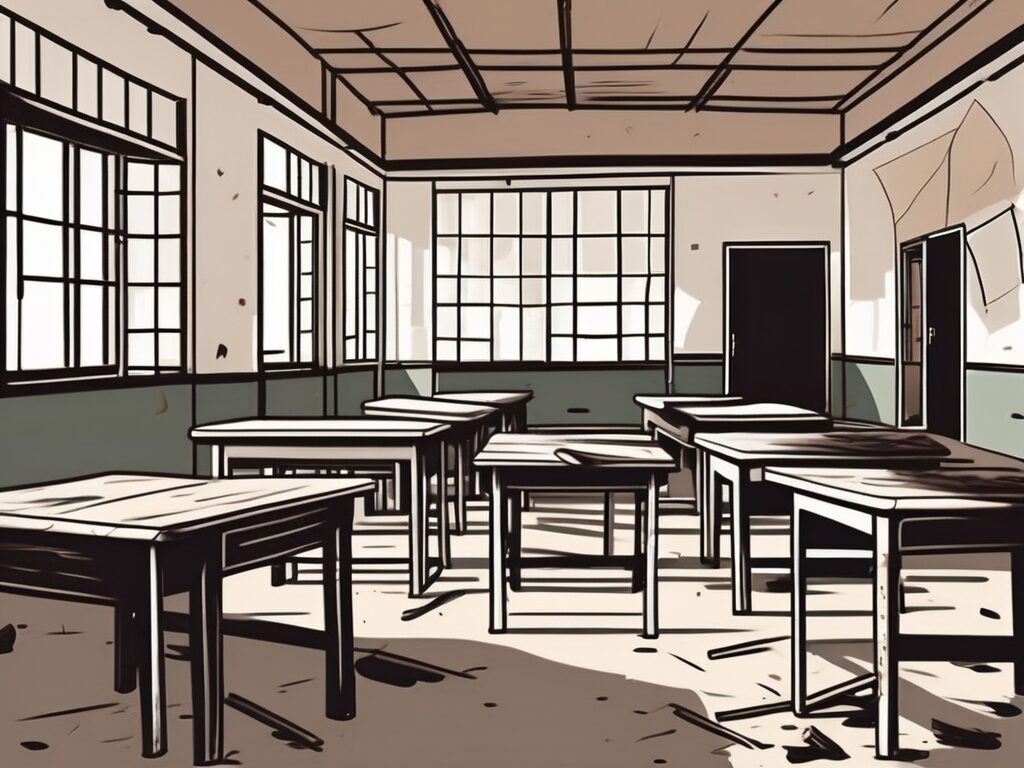Cambodia, a country rich in history and culture, has been making significant strides in various sectors, including education. However, despite the progress, the education system in Cambodia still faces a myriad of challenges that need to be addressed to ensure a brighter future for the country’s youth. This article delves into these challenges, shedding light on the issues that need urgent attention and possible solutions.
Quality of Education
Curriculum and Teaching Methods
The quality of education in Cambodia leaves much to be desired. The curriculum is often outdated and does not align with the current needs of the job market. The teaching methods used are largely traditional, with a heavy focus on rote learning rather than critical thinking and problem-solving skills. This approach does not foster creativity and innovation, which are crucial in today’s fast-paced world.
Comparatively, countries like Singapore and Finland have revamped their education system to focus more on skills like critical thinking, creativity, and problem-solving. These countries understand that the world is rapidly changing, and the education system must keep up with these changes to prepare students for the future.
Teacher Quality
Another aspect that contributes to the quality of education is the competency of the teachers. In Cambodia, there is a shortage of qualified teachers, especially in rural areas. Many teachers lack the necessary training and skills to effectively impart knowledge to the students.
Contrastingly, in countries like Japan and South Korea, teachers undergo rigorous training and continuous professional development to ensure they are equipped with the latest teaching methods and techniques. This commitment to teacher quality is one of the reasons these countries consistently perform well in international education rankings.
Access to Education
Rural vs Urban Divide
Access to education in Cambodia is another significant challenge. There is a stark disparity between urban and rural areas. Schools in urban areas are often better equipped with resources and have more qualified teachers compared to those in rural areas. This disparity results in a significant gap in the quality of education received by students in these areas.
For instance, in countries like Australia and Canada, efforts are made to bridge the urban-rural divide in education. These countries invest in rural schools, provide incentives for teachers to work in rural areas, and utilise technology to deliver quality education to remote areas.
Gender Disparity
Gender disparity in education is another issue that Cambodia grapples with. Cultural norms and societal expectations often limit girls’ access to education. This gender gap in education not only affects the girls but also has far-reaching implications for the country’s socio-economic development.
In contrast, countries like Norway and Sweden have achieved gender parity in education. These countries have implemented policies that promote gender equality in education, recognising that education is a fundamental right for all, regardless of gender.
Infrastructure and Resources
Infrastructure
The lack of proper infrastructure is another hurdle in Cambodia’s education system. Many schools, particularly in rural areas, lack basic facilities like clean water, electricity, and sanitation facilities. This lack of infrastructure makes the learning environment less conducive and can affect students’ performance.
On the other hand, countries like the United Kingdom and the United States invest heavily in school infrastructure, recognising that a conducive learning environment is crucial for effective learning.
Resources
Lastly, the lack of resources is a significant challenge in Cambodia’s education system. Many schools lack essential learning materials like textbooks, computers, and science equipment. This lack of resources hampers the delivery of quality education.
Comparatively, countries like Germany and the Netherlands allocate substantial resources to education. These countries understand that adequate resources are necessary for effective teaching and learning.
Conclusion
While Cambodia has made progress in its education system, there are still numerous challenges that need to be addressed. By focusing on improving the quality of education, ensuring access to education for all, and investing in infrastructure and resources, Cambodia can overcome these challenges and build a robust education system that prepares its youth for the future.
Looking at the successes of other countries can provide valuable insights and lessons for Cambodia. By learning from these countries, Cambodia can develop strategies and policies that address its unique challenges and ensure that every child in the country has access to quality education.
Empower Your Teaching Career with IPGCE
As Cambodia strives to enhance its education system, educators play a pivotal role in shaping the future. If you’re an educator looking to elevate your qualifications, broaden your professional network, and gain a deeper understanding of global education systems, IPGCE is your gateway to success. Our International Postgraduate Certificate in Education is tailored for teachers aiming for Qualified Teacher Status and those seeking substantial career growth. With IPGCE, you’re not just preparing for the international educational landscape; you’re also increasing your chances for interviews, promotions, and salary increments. Embrace the opportunity to join a global community of educators and balance your professional development with your existing commitments through our flexible online study options. Take the first step towards transforming education in Cambodia and beyond. Join the UK’s #1 Teacher Training Course today and be the change you wish to see in the classroom.

